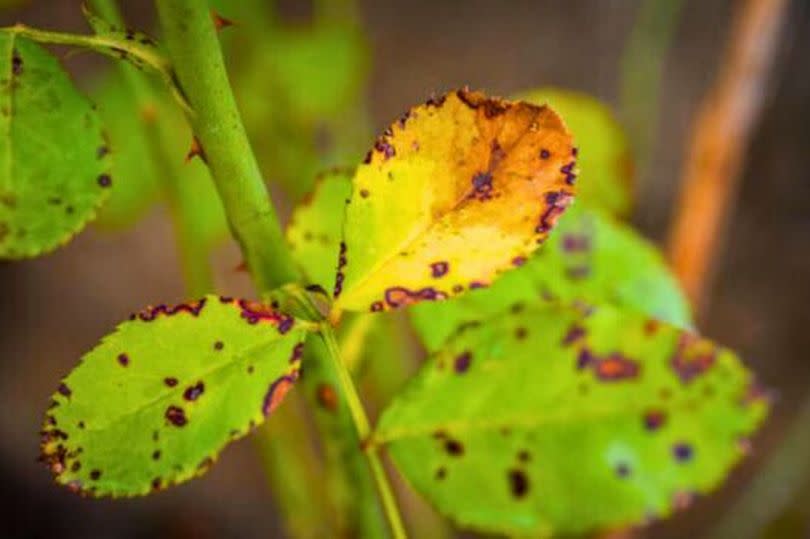Alan Titchmarsh shares how to stop harmful summer disease from 'killing off' roses

A useful tip shared by Alan Titchmarsh can help gardeners save their roses from being 'killed off' by a disease this summer. Roses are popular in gardens due to their gorgeous blooms - but they may never flower again if you are not on the lookout for signs of black spot disease.
The disease is a serious fungal infection that thrives in warm, wet conditions typical of British summertime, and is identifiable by the yellowing of rose leaves with large black spots on them.
While black spot won't immediately kill your roses, over time an infested rose becomes more vulnerable to a range of diseases and pests, leading to lacklustre or absent flowering.
READ MORE: Plant dubbed 'new knotweed' as it invades gardens across the country
Getting rid of black spot from garden soil may pose a challenge, but celebrity gardener Alan Titchmarsh has advised that prevention is simple, reports the Express.
On the 2011 edition of "Love Your Garden", Alan revealed that appropriate watering during the summer months is crucial for fending off not just black spot, but also mildew and mould.
Alan explained: "They [roses] love moisture and that will help to stop them from showing signs of mildew - that white powdery stuff - and black spots. It's when they are short on moisture they tend to get these diseases but they do need food."

Always ensure you water roses at soil level rather than allowing the water to trickle down the foliage, as diseases are transmitted via moisture. The longer the rose leaves stay wet, the more prone they become to diseases.
It's also beneficial to water your roses in the morning during summer, enabling the leaves to dry out swiftly and ensuring that more water gets to the roots instead of evaporating.
Alan highlighted the importance of providing proper nutrients to keep roses robust and disease-resistant. He advised: "Sprinkle some rose fertiliser around the soil above the roots in March and again in June."
Fertilising roses too late in the season may not afford the plant ample time to absorb the necessary nutrients, potentially causing fewer flowers, stunted growth, and increased vulnerability to diseases.
June marks a key time for new floral production in roses; thus, fertilising then prepares them for a vigorous summer blooming period, resulting in larger, more plentiful flowers.
While some gardeners favour a homemade concoction of banana peels, crushed eggshells, coffee grounds, and Epsom salt to nourish their roses, others opt for a balanced commercial fertiliser with equal proportions of nitrogen, phosphorus, and potassium.
Ensure it's a slow-release fertiliser to provide roses with nutrients over an extended period, and also verify that the fertiliser contains micronutrients such as magnesium, iron, manganese, or zinc. These will not only prevent rose diseases but also aid the flower in blooming this summer.

 Yahoo News
Yahoo News 
